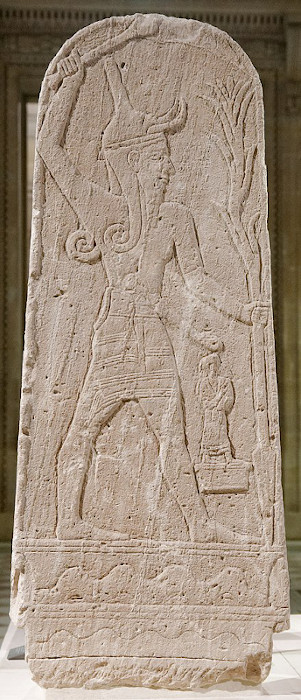
Struggles in Ancient Religious Reform: The Rise and Fall of the Cult of Elagabalus
In the ancient chronicles of Rome, few figures evoke as much intrigue and controversy as Elagabalus, the teenage youthful emperor whose rule in the early 3rd century AD was defined by ambitious religious reforms centered on the Syrian deity, Elagabal. Characterized by its elaborate ceremonies and departure from traditional Roman practices, the Cult of Elagabalus attempted to reshape religious norms to align with personal beliefs and political agendas. Yet, despite the emperor's efforts to promote his deity within the Roman pantheon, the cult was met with limited success. Like those who came before him, the dynamics and shortcomings of ancient religious reform initiatives highlights the complexities and challenges in political climates entrenched in cultural traditions.
A Life of Servitude
Born in Emesa, Syria, Sextus Varius Avitus Bassianus (Elagabalus) enjoyed a life of privilege and opportunity. His mother was a cousin to the current Roman emperor, Caracalla, a relative of the Severan dynasty. His family name also connected him to the Roman Syrian Emesene dynasty, the House of Sampsigeramus, priestly kings. As such, he was given rights to the priesthood, which he honorably obliged himself to. From a young age, he acted as the head priest to Elagabal, Ba’al of Emesa, lord and primary deity of Syria.
- Little Emperors and Their Regents: Child Rulers & the Supportive and Destructive People Behind Them
- Roman Emperor Elagabalus Assigned Transgender By A British Museum
Elagabal, whose name translates to “God of the Mountain,” was the sun god, representing the principles of masculinity and the warmth of fertility. With him, were his divine consorts: Atargatis, the Great Mother, and Astarte, the goddess of fertility. Ancient Babylonia deeply inspired the religion of Syria; therefore, many of Elagabal’s qualities and rituals were reminiscent of this time. In appearance, however, he more closely resembled the nearby Chaldean god Gibil, god of the black stone. Elagabal’s cultic statue was never seen in human form; it was the baetyl, a large, conical black stone that fell from the sky as a gift from the god.

The Canaanite deity, Baal, in a smiting position. (Jastrow / Public Domain)
To celebrate Elagabal, festivals were held as an adaptation of the ancient Babylonian New Year, the Akitu Festival, held every spring to commemorate rebirth and the agricultural cycle. It was a week-long event that took place in the first month of their calendar year. The festival revolved around the high priest, the king, and the supreme god, Marduk, along with his son, Nabu. Traveling to the temple of Nabu, the king would rest, and return to Babylon with the god’s statue. He would then perform a royal ceremony in the temple of Marduk, being gifted an oracle. Later, all the gods received cleansing and new dress before being brought to Babylon and placed on exquisitely decorated chariots. Riding through the city with Marduk, they ended their tour within the house of the new year. The festival was a joyous occasion, full of song, dance, and sacrifices to the god.















